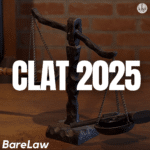
INTRODUCTION:
Rent Control is one of the initiatives of the government to ensure the welfare of its citizens. Governments of various states have been taking measures to have an act that regulates the relationship between tenant and landlord. Although it was introduced as a temporary measure around post-World War II managed to be part of policy decisions. It has often faced criticism on the ground of it being economically inefficient. It comes as a subject under state legislature therefore making changes as per requirement comes under the respective state government. Laws were introduced merely with an aim of i.e., Preventing the landlord from increasing rent and securing of tenants from eviction.
LEGISLATIONS:
The Urban Land Ceiling and Regulation Act (ULCRA) was passed by Central Legislature in the year 1976. The Delhi Rent Control Act (DRCA) came into force in the year 1958. The acts were framed keeping in mind to provide protection for tenants from landlords. It was further intended not to let rich people accommodate large pieces of land. To ensure that even less well-off had the chance for accommodation but failed. Delhi Rent Control Act was passed with the aim that providing a safeguard to migrants living in rental accommodations.
DRCA states that any person having authority to receive rent on account of premises that are being let out for rent is known as a ‘Landlord’. It could be a person having General Power of Attorney, a legal representative appointed or the clerk who is bound to collect rent. ‘Tenant’ means any person who is responsible to pay the rent in order to compensate for the use of the premise. The act does not apply to premises that belong to the government or the relation of lease or requisition created with the government. The ‘standard rent’ claimed is inclusive of maintenance charges, the liabilities to pay for maintenance charges are not clearly demarcated. Registration of tenancy agreements has been made compulsory under the Transfer of Property Act allowing for legally registered contracts. The rent of such property shall be determined by Rent Controllers.
If any dispute arises during the course between landlord and tenant the same shall come within the purview of this act. A rent Controller is a person who has the authority to deal with such cases. For a dispute to be under DRCA the foremost requirement is the existence of the relationship of landlord–tenant between parties to the case. While dealing with such matter Rent Controller must ensure the balance between the rights and liabilities of parties against each other.
DRCA applies to areas that come under the New Delhi Municipal Committee (NDMC), and urban areas of the Municipal Corporation of Delhi (MCD). Its jurisdiction could be extended at the discretion of the Central Government and notifying same in Official Gazette. The applicability of the act only extends when the rent is up to Rs. 3500. The act is over-friendly towards tenants providing them various rights over the rental housing facilities. The landlord has no right to evict the tenant on any ground not mentioned in DRCA. It further allows the landlord to rose the rent only if the premises are renovated up to 7.5%.
FAILURES OF LEGISLATIONS:
Being old legislation, it has several disadvantages, the restriction that was placed on the sale or transfer of commercial properties. It leads to a decline in rental housing in Delhi, the capital. Tenants refused to vacate the shops as they getting a shop worth crore rupee for merely a few hundred per month. Section 6 of DRCA provides for the hike of rent by 10% after every three years. Despite the fact that the inflation rate rises up to 20% every three years. The Delhi High Court in the year 2002 struck down three provisions of DRCA including Section 6. As the provisions were arbitrary and unfair toward the landlord. The DRCA and ULCRA (repealed) have ended up creating chaos in rental housing facilities. The situation was meant to be avoided by introducing proper regulatory mechanisms.
Allowing rent below the market rate would only reduce its profitability leading to a reduction of investment in rental markets. Resultantly, Consumer Mobility would decline causing loss whose jobs, education & other opportunities are limited by geographical location. It further shows the reduction in tax revenues of rental properties and an increase in administrative work. With the reduction in rental housing available, people often tend to stick to certain areas leading enhanced rate of poverty. Rent Control Housing is seen as a strategy against poverty and is enacted with the intention to benefit the poor. It would further force people to turn towards those that do charge high but with fewer facilities available. It would only push people more and more toward poverty with no actual promise of a secure future.
Delhi Government drafted new legislation as Delhi Rent Act was approved by parliament in the year 1995. But Delhi Government failed in order to implement it. It was a better version than the DRCA but it was an overcautious attempt at reform.
CONCLUSION:
The rent Control Mechanism is unfair toward both tenants and landlords. It seems to be ineffective and lacks proper planning in hands of the government. It was only a mechanism to ensure the refugees get an accommodation facility. India could only aim for either better laws related to rent or scratch the system from society. The only option for encouraging private investments in rent-related housing facilities is a clear policy for rental charges. The government further needs a framework for enforcing rent-based contracts. India should look at anti-rent control strategies as it has proven to be a failure or come with better measures. The Sooner such legislation came to an end the earlier it leads to urban regeneration and proper growth of cities.



